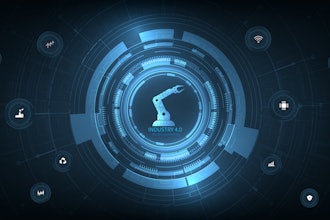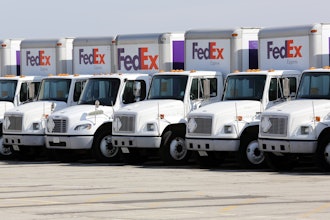
Today, more than 52 percent of the Fortune 500 companies from 2001 are gone. Once high-performing brands such as Borders, Blockbuster, Kodak and Circuit City are now out of business.
It’s an important — albeit jarring — reminder for B2B company leaders. Competition is fierce and it’s a race to gain, keep and grow customer accounts. When it comes down to it, making your numbers is hard. Every company is jockeying to gain market share, increase revenues and improve profitability.
Companies that are not adapting and transforming to remain competitive will not win. There are a few trends that are contributing to this hyper-competitive environment. In this post, I’ll cover them and share how artificial intelligence (AI) and machine learning are driving business growth and enabling companies to thrive.
Trend No. 1: Customer Loyalty is Down
B2B customers expect consumer-like access to products and prices, and in many industries, this could be why customer churn is on the rise. Product information is readily available, there are more competitors and products to choose from, and it’s easier to access and purchase online than ever before. This puts tremendous pressure on companies to deliver a relevant, timely and consumer-like experience to B2B buyers.
Trend No. 2: Data Burden on Sales Reps
With added pressure due to intense competition, sales reps are spending more time researching and digging through data to find the information they need to gain a competitive advantage instead of actively selling. Increasingly, reps focus on a handful of their top accounts and spend less time in front of their customers. This exacerbates the customer churn issue.
Trend No. 3: Sales Turnover
If sales people aren’t having success, what do they do? The good ones leave and the bad ones hide. A 2016 Radford study showed voluntary turnover rates for sales people has hit a five-year high. The result is an environment where a less-experienced sales organization is tasked with delivering more, while serving customers that are in more control than ever before.
How AI Turns Obstacles into Opportunities
Leaders of B2B companies are painfully aware that it’s at least five times more expensive to acquire a new customer than it is to sell to an existing customer. What’s less obvious is how to sell more to those existing customers. Today, more than ever, B2B companies need a reliable, actionable, and predictable way to grow the lifetime value of their customer relationships.
Some B2B solutions are focused almost exclusively on the pre-acquisition marketing and sales funnel, offering insights from CRM data on where to find new customers. This is only part of the answer. Other applications only utilize transactional or ERP data to give insights on price optimization strategies.
Both approaches are useful, but they still fall short in helping you identify the maximum economic value of every customer relationship. Making matters worse, they provide limited guidance to your sales team.
For the C-suite, identifying the most predictable and actionable paths to hitting revenue and margin targets is necessary to survive and thrive in hyper-competitive, price-sensitive environments.
Doing so requires a unique combination of AI, predictive analytics and mathematical optimization. In fact, Dan Olley, CTO of Elsevier, stated that if CIOs wait another three years to invest in machine learning, they will never catch up.
Many B2B company leaders are ahead of this curve and embrace AI-enriched technology to:
- Evaluate and quantify the untapped economic potential of every individual customer, and;
- Deliver customer-specific intelligence about optimal product mix, pricing and current demand.
By doing so, they serve up actionable insights to their sales teams such as:
- Which products customers will find most valuable.
- Which customers are most ready to purchase new products.
- Which customers are at risk for buying from competitors.
- What the optimal, market-based price is for each transaction.
With this solution, your business can realize customer lifetime value increases of more than 20 percent while increasing revenue and profit growth rates 5-15 percent.
 Greg Peters, Zilliant Chairman, President and CEO
Greg Peters, Zilliant Chairman, President and CEOTo survive (and thrive) B2B companies need to harness the power of AI to capitalize on the lifetime value of their customer relationships. Without it, they may be the next giant to fall.
Greg Peters oversees all of Zilliant’s operations, including its strategic direction, product planning and development, as well as its financial management. Under Greg’s leadership, Zilliant has grown into one of the leading providers in predictive B2B sales guidance and has pioneered new approaches for companies to harness the power of Big Data.
This article was originally posted by Zilliant on its website here.























